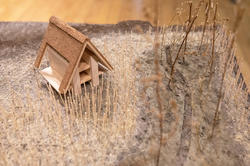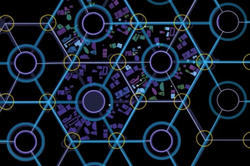Students in an interdisciplinary fall course learn to observe the living world in search of design strategies grounded in planetary health.
RISD-Hyundai Strategic Partnership Explores New Concepts in Bio-Innovation
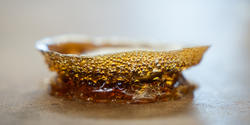
Modular seating designs that take their cue from the remarkable folding capability, strength and elasticity of an earwig’s wing. A breathable exterior membrane with microscopic pores akin to the stomata certain plants use to absorb water. A no-contact sensory system that responds to drivers’ vital signs inspired by the African elephant nose fish’s ability to use the electric field around its body to detect obstacles in murky waters.
These are just a few of the innovative projects students are working on in the spring Hyundai Motor Group-supported studio Future Structures: Biodesign Research and Regenerative Design. The course is part of a six-year partnership led by RISD’s Strategic Partnerships office that engages with Hyundai Motor Company; the Genesis, Hyundai and Kia brands; and the resources and staff expertise of the Edna W. Lawrence Nature Lab. This semester’s offering is co-taught by Max Pratt 19 FD/MID 21, Eliza Squibb 13 TX and environmental biologist Nicole Weber with support from Nature Lab Hyundai Motor Group Biodesign Fellow Jessica Smith. It pushes students to apply the lessons of nature to their environmentally friendly automotive industry designs.
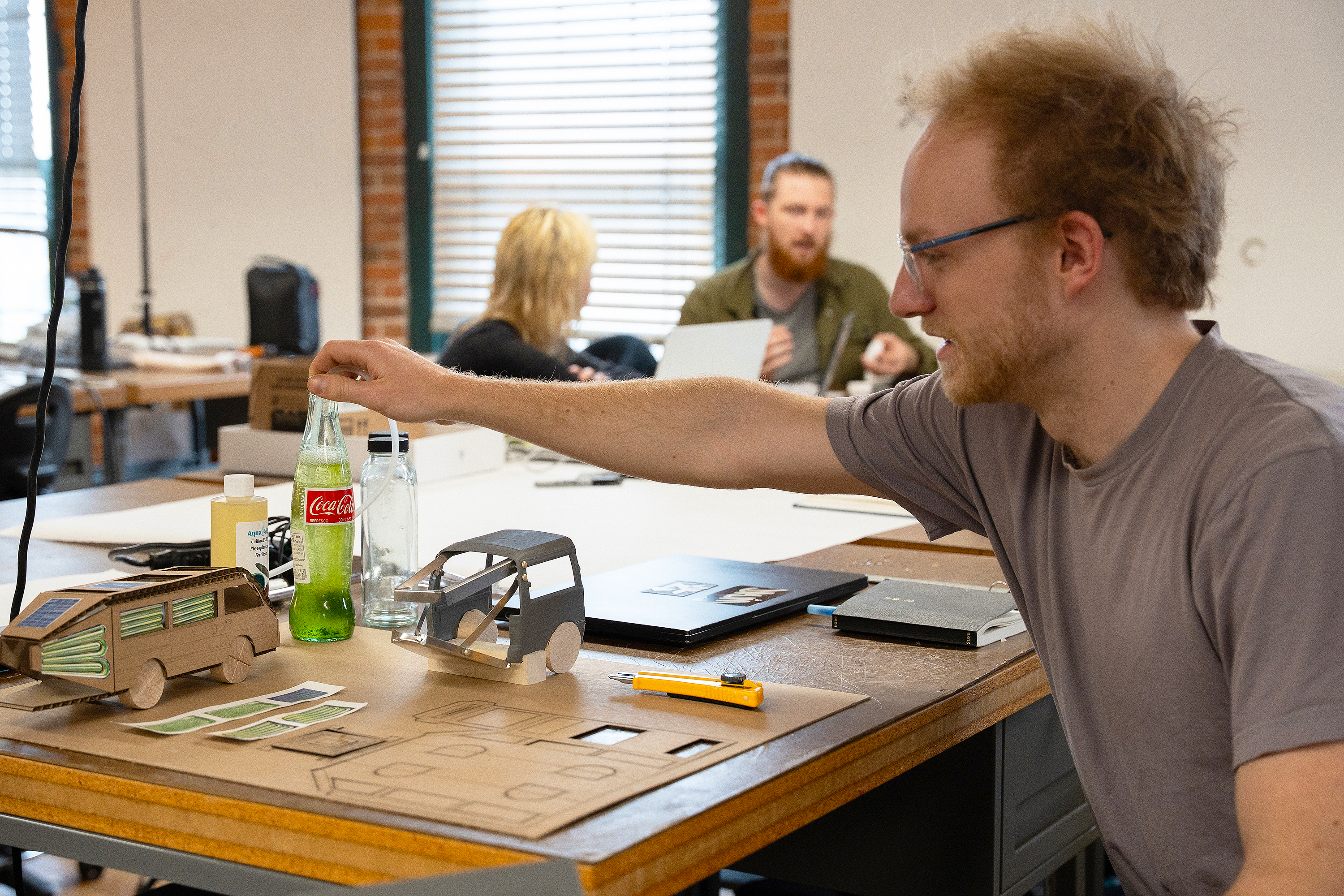
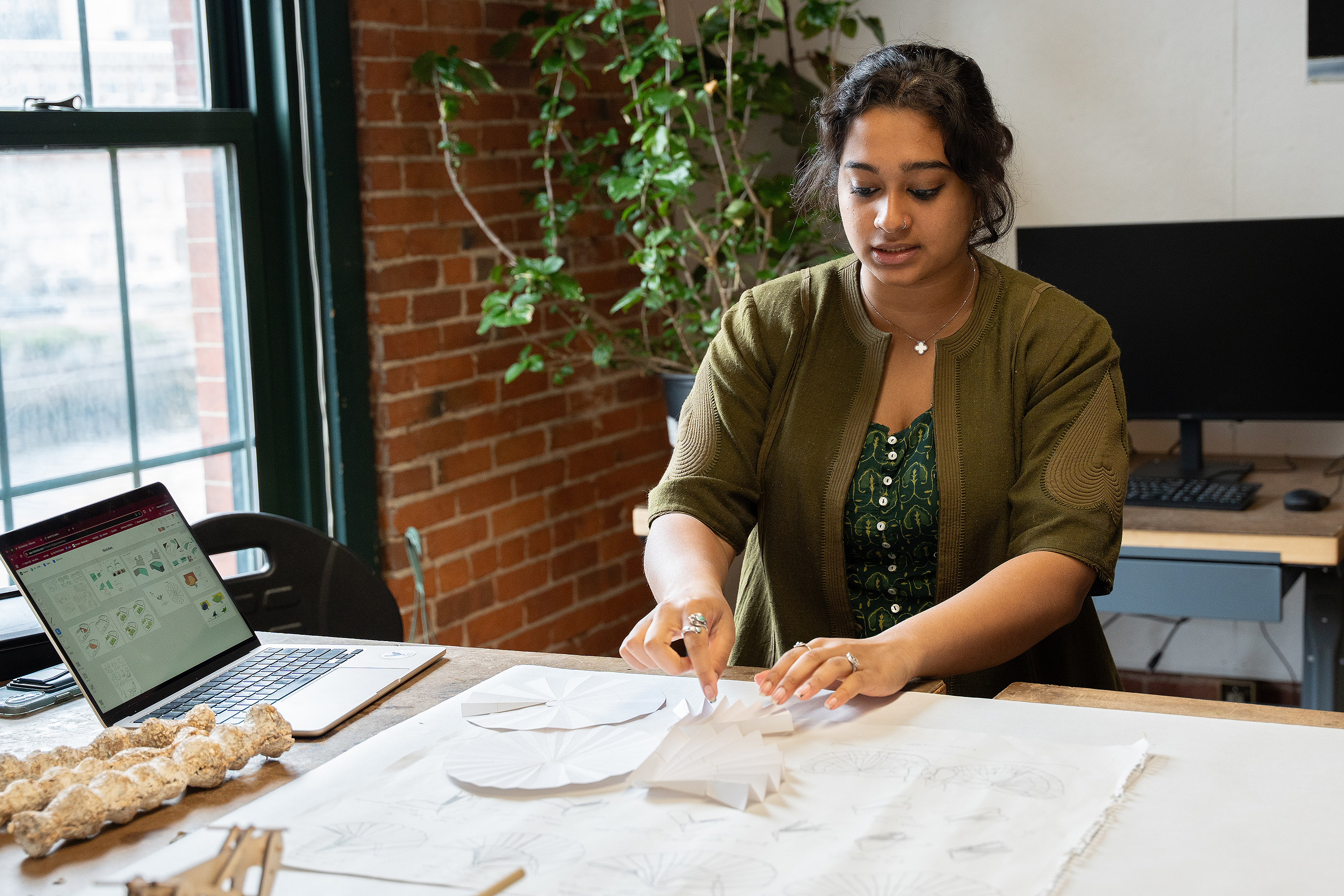
“We’re examining natural environments, systems, processes and organisms with the intent to design a more circular and less harmful human-planet experience,” Pratt explains. “Students are exploring biomimicry and biodesign methodology as a pathway toward innovative materials, products and manufacturing methods with real-world applications in the field of future mobility.”
About midway through the semester, the class broke into groups so that each student designer or design team could share their ongoing research and gather feedback on next steps. Junior Olivia Kuang 26 FD is developing a marine-based bio-adhesive (see top photo) inspired by mussels and barnacles with none of the carcinogenic formaldehyde found in typical industry adhesives. “I’m working on a formaldehyde-free adhesive that is also water resistant and cost effective,” she told the group as she passed around sample prototypes. “This one is really strong, but it seems to work better on fibrous materials than, say, plastics.”
Squibb noted that the next step in her process should be testing different materials against a benchmark conventional adhesive. “Your samples should be more regular for the sake of comparison,” she advised. She showed students a spreadsheet used for tracking Instron testing in past Regeneration Studio research.
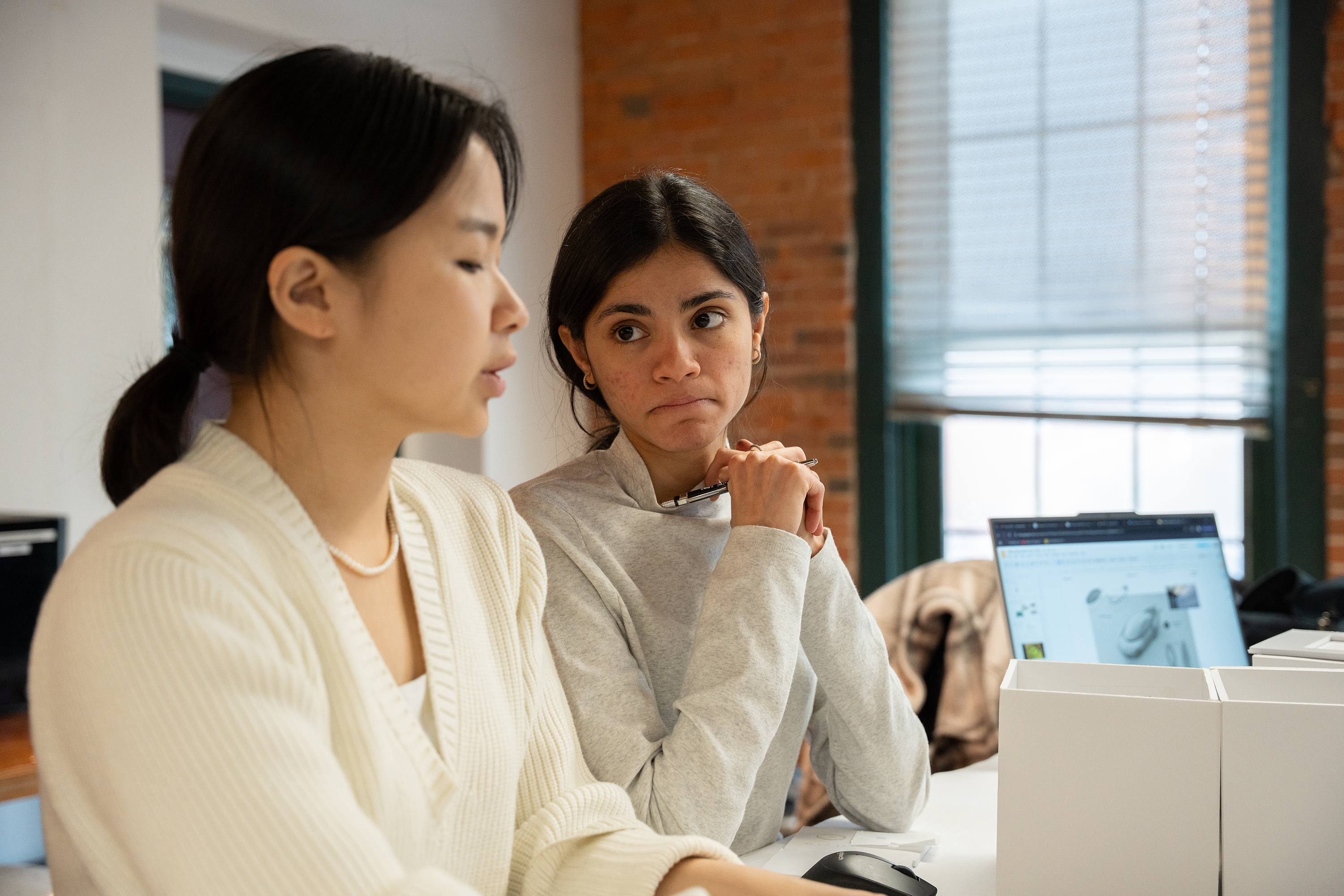
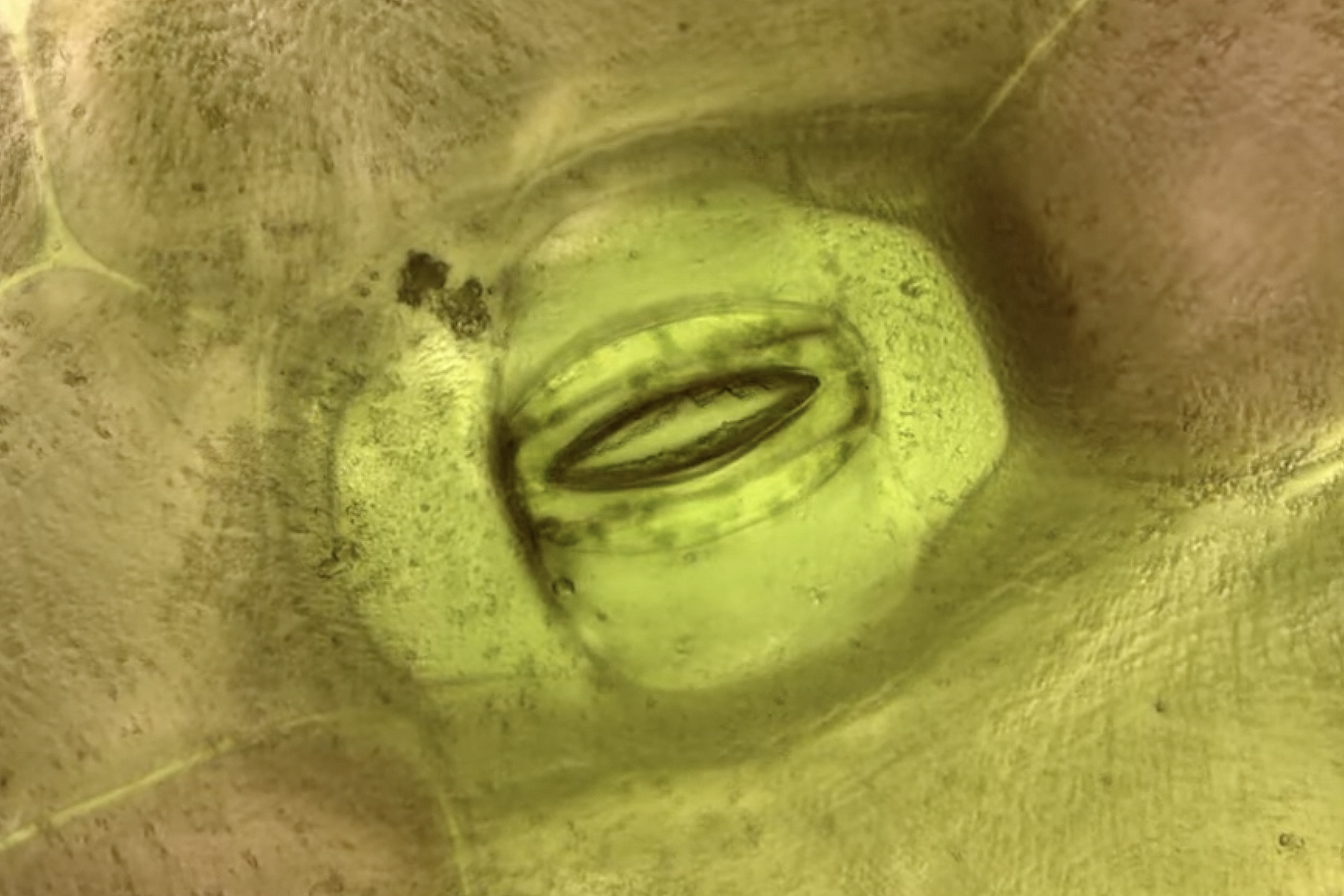
Senior Gresh Chapman 25 ID is taking inspiration from another green life form—algae—and building on a project he started last fall to make his 30-year-old van carbon neutral. “What if the van filtered the air, rather than adding more pollution?” he asks. His latest plan involves creating a vertical algae farming system that would filter the exhaust while he drives. “I’m manufacturing solar-powered polycarbonate window modules, which are designed to fit any vehicle’s window,” he explains. “As the algae grows, each panel would absorb up to a kilogram of carbon dioxide every day.”
Fellow Industrial Design major Christina Wang 26 ID is also revamping and extending an idea she proposed last fall: a hospital car that senses the driver’s vital signs and pulls over if the driver is falling asleep at the wheel or having a medical emergency. “It all started when my mom fell asleep while driving,” she says. “No one was hurt in the incident, but it gave me the idea to design a car that understands your health and could even turn commute time into a preventative care checkup.”
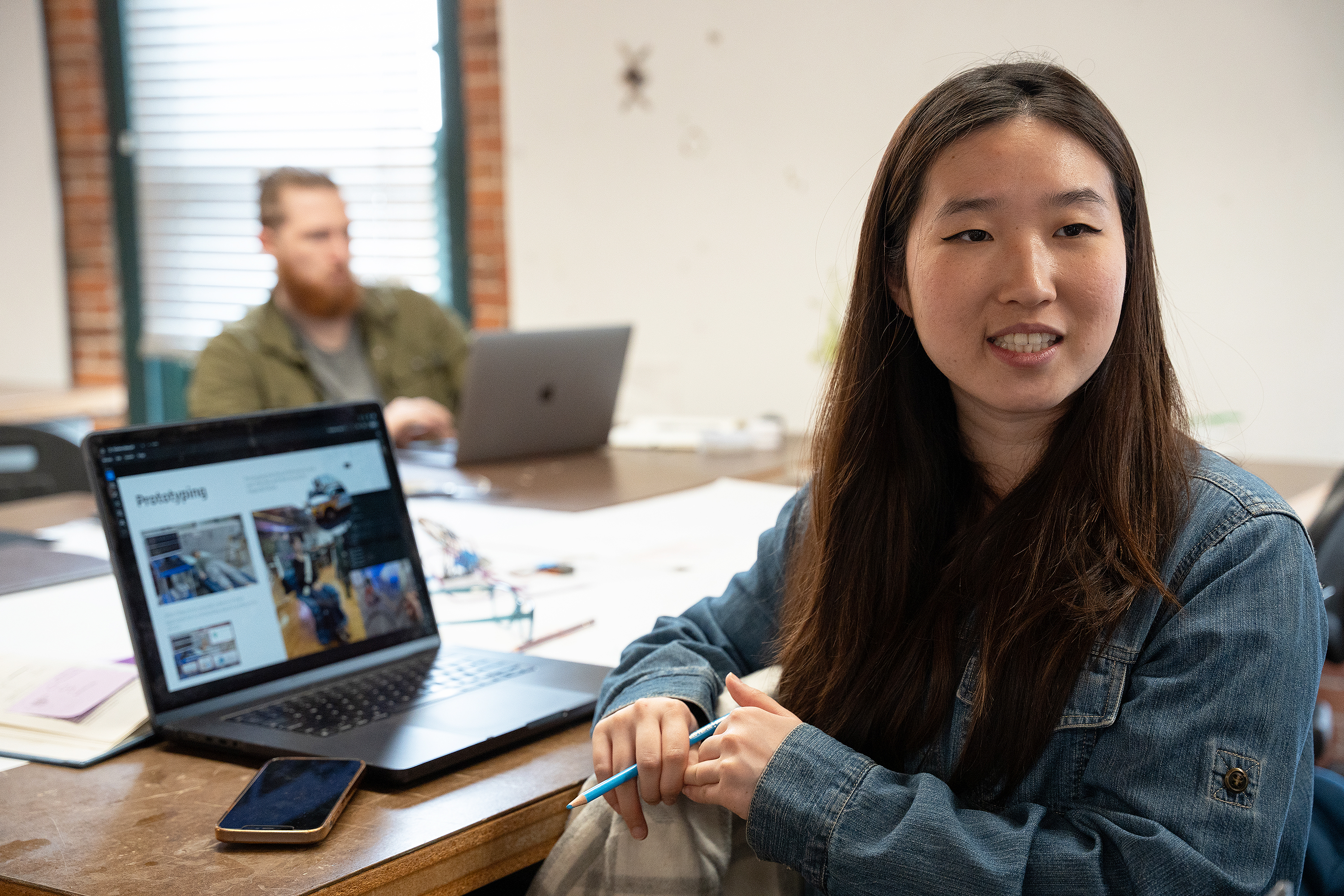
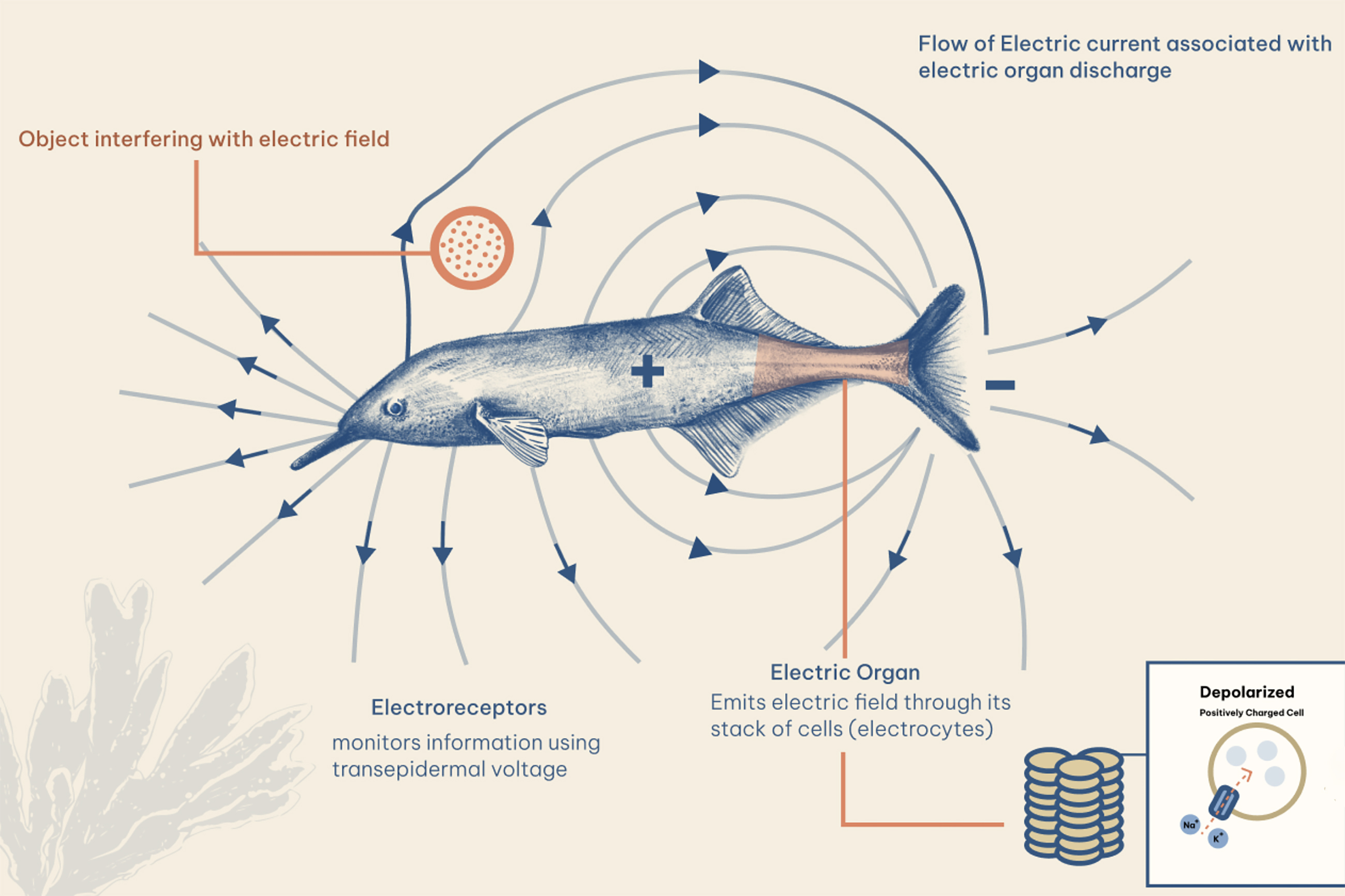
Like the creature that inspired her design—the elephant nose fish—the human heart emits an electrical field, which Wang hopes to utilize in a no-contact sensory system. “The fish uses the electric field to navigate, almost like bats use echolocation,” she explains. “If the hospital car could read that signal, it might switch into autopilot and take the driver to the nearest hospital and even send information ahead to the ER doctors.”
Other students in the class are drawing ideas from the Namib Desert beetle, self-cleaning plants like the lotus, marine bacteria like the Shewanella, elephants whose skin protects them from the heat and even the mobility of the common house cat. “These natural inspirations are feeding into designs that address real and complex problems, from objects and materials to applications and systems,” Pratt says. “Some of the students began with a singular topic, idea or question, and others are working with many ideas and distilling them into a unified project that impacts human mobility.”
This work is made possible through the sponsorship of Hyundai Motor Company and inspired by the designers at Hyundai, Kia and Genesis.
Simone Solondz / photos by Kaylee Pugliese
May 15, 2025

